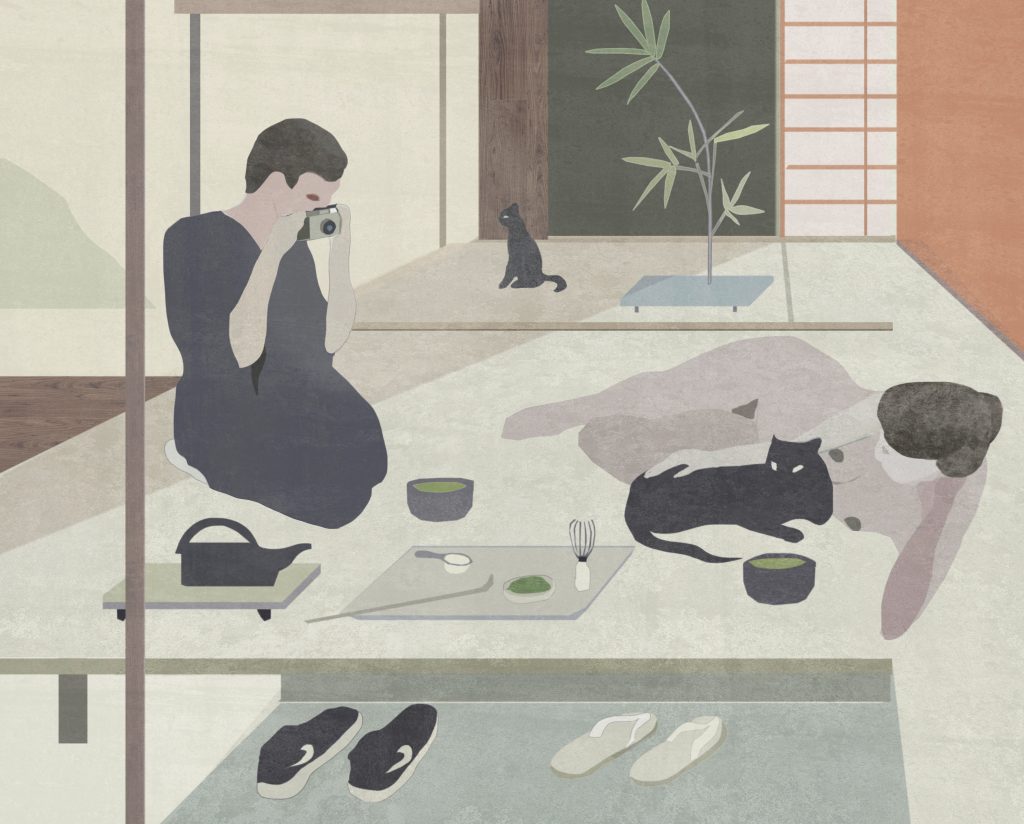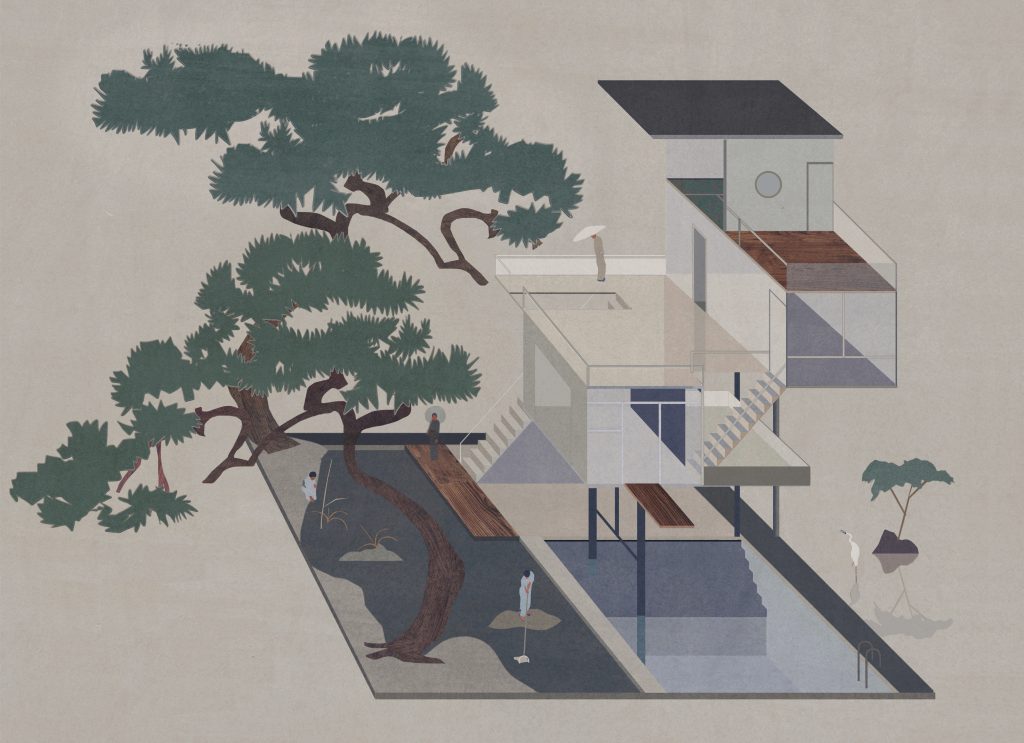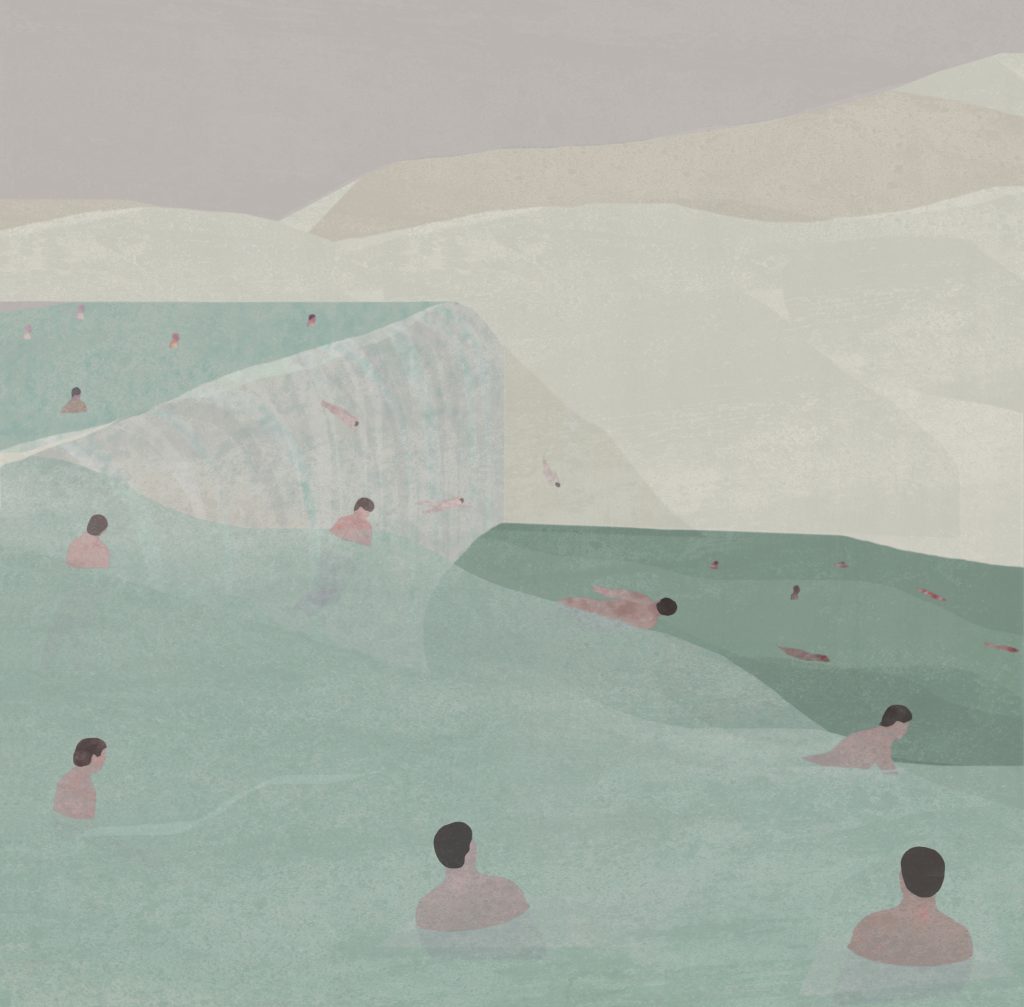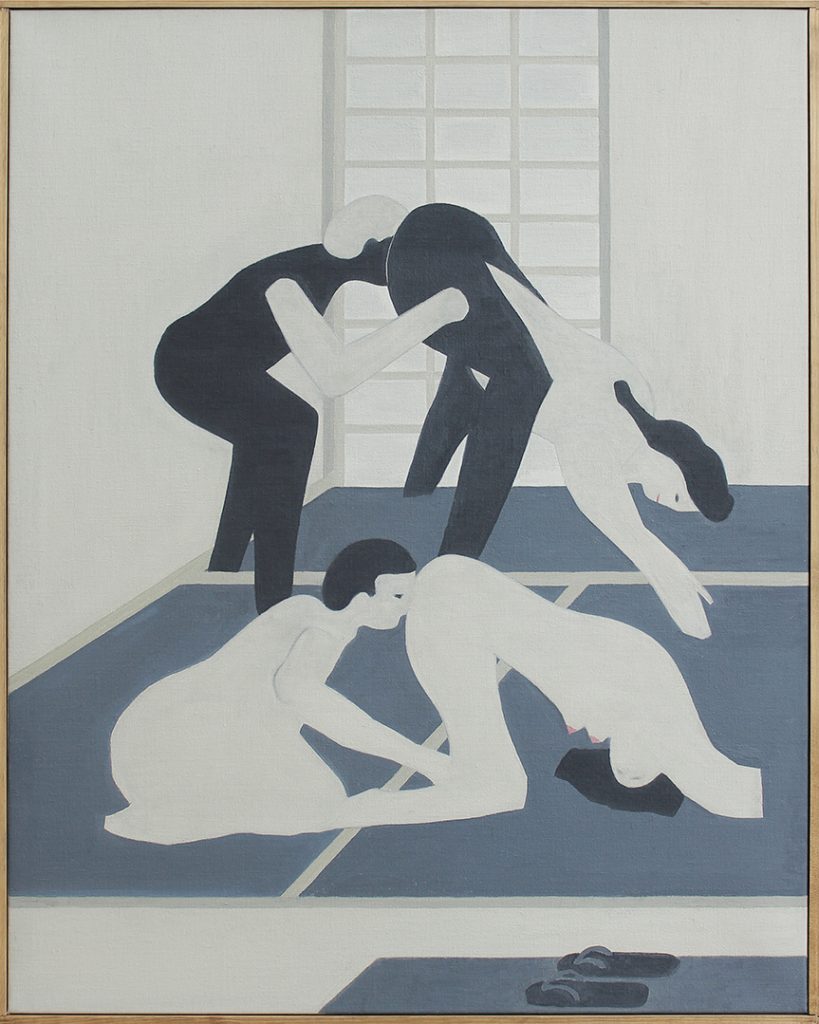← Back
Jon Koko, Fine Artist/Traveller/Japanophile
Interview, 23 February 2018
Feeling bored with the conventions of Western art – fine artist Jon Koko escaped his native Sweden and relocated to Taipei where he spends his time exploring Asian architecture and culture, making a name for himself by creating evocative and minimalist pieces inspired by Japanese art.
In recent years, a new and exciting generation of Swedish fine artists have emerged and are stirring up interest outside of their country of origin. From this pool of northern talent, one in particular has continuously showed significant promise and his name Oskar Glemme, perhaps best known for his artist alias – Jon Koko.
With works made up of soft colors and highly original compositions, Koko explores themes such as eroticism, symmetry, silence and human suffering in an evocative and tranquil array of minimalist illustrative pieces.
Clearly having an affinity for Asian, and more notably Japanese art and architecture, it comes as no surprise to hear that Jon Koko currently lives in Taipei, Taiwan. Here, Jon Koko is able to gain direct access to his sources of inspiration.
After studying woodblock printing in Kyoto, Japan and travelling extensively through the region, it was coincidental that the promising Swede ended up in Taiwan. But he is adamant that his newfound home is a hotbed for vibrant oriental culture and inspiration for his work.
We caught up with the nomadic artist to get his thoughts on the necessity for solitude, oriental art and why Swedes are able to thrive off the long and dark winter months for creativity.

Who is Jon Koko?
– A 29-year-old guy from Sweden with a great appreciation for oriental culture, architecture
You grew up in Malmö, Sweden. Can you paint your timeline as an artist in words for us?
– I actually grew up in a
“I always use my eyes to observe my surroundings, like a hawk”

When did you initially come into contact with Japanese art?
– It was after my first visit to Japan in 2011 when I started to embrace Japanese art. At first, I didn’t really ”feel” it, I had never seen it before except for some Hokusai prints. But gradually it
What is it like, with your aesthetic preferences, to live in Taipei and how did you end up there?
– The reason why I’m here is totally random. I stayed in Kyoto in the summer of 2017 to study Japanese woodblock printing. After those 3 months, I just felt I wanted to stay in Asia a bit longer because I love it here. I kind of scanned the whole South-east Asia on a map, figuring out where I could stay for an extended period of time, and in the end, it felt natural to try my luck in Taipei. Everything is so convenient here and the vibe is relaxed. Taipei also has great food and beautiful nature with green mountains, oceans and rivers close to the city. I don’t know what else I could wish for really. A great surprise is the architecture here. It’s very much examples of the form-follows-function-phenomenon. Spontaneous shapes and cages surrounding the windows can be seen on each and every house. Also, extensions, unpredictable patterns of old and modern tiles, windows and plants creates beautiful formations. It’s really a special experience to walk the streets of Taipei. It’s very stimulating and inspiring.

“I try to keep it simple by creating pieces which I feel are in accordance with my aesthetic ideals, observations, thoughts and experiences in life”
I understand an encounter with Buddhist philosophy changed your outlook on a lot of things, can you elaborate on that a little bit?
– Even though Buddhist philosophy has fascinated me for some 10 years now, I am not really following the path of a true Buddhist. With that being said, I still found it very useful and it has so many useful tools for me that I apply in my life. For instance, meditation and the explanation of how the human mind works. Also, how life is ever-changing and impermanent. This helps me avoid being totally lost in the cloud of distractions and illusions we are facing today. I worry about the world we live in and when you look back on human history, it’s filled with a thick collective and individual darkness which I hope will not repeat itself.
You are part of the emerging pool of new artists coming out of Sweden, creating a buzz internationally with your work; how do you rate the current regrowth of Swedish fine artists?
– I’m happy that Swedish artists can reach out to the world because I know we have great taste in all kinds of arts. I think we as Swedes deserve the

Many of your pieces, especially the miniature house models, have an architectural nod to them; is that something you have studied in the past?
– I have never really studied anything practical, but I have studied a bit of Japanese architecture. I would say my inspiration comes from observing houses, buildings
Am I right to assume that most of your pieces aim to explore the human condition?
– I am not so clever or conceptual in my art as I wish I was. I try to keep it simple by creating pieces which I feel are in accordance with my aesthetic ideals, observations, thoughts

You have previously said that music is one of the most inspiring things in your life, where do you place music in the spectre of art forms?
– Music is important for many reasons. One is that it will set the mood in a certain way so that you can be focused. I feel many times, if I play a great piece of music it works also through my mind directly and I can somehow feel the energy working almost by itself. It’s hard to explain, but for instance, if I listen to a calm, beautiful piece of ambient music it will naturally make me strive to make a painting in that same vein. If you listen to Japanese Koto music and at the same time look at some Ukiyo-e print it will fit perfectly together, and the same goes for a piece of Jazz and The Cut-Out series of Matisse, and so on and so forth.

What can we expect from Jon Koko in 2018?
– Hopefully I can produce some artwork that people can enjoy. My own goal is to get better and to work harder each day.
For more please visit:
www.jonkoko.com/